Credit crunch fears, a rebound in China, and housing expenses ease
.png)
This week’s charts begin with a survey of small-business sentiment in the US, showing how concern about tighter access to credit is correlated with higher bankruptcy rates down the road. We consider key energy resources – comparing oil prices to historic trends in the wake of OPEC+ production cuts, and a natural gas discovery in Turkey that may help the nation offset one of its most expensive import dependencies. Stockpiles of another key resource, copper, are at multi-year lows amid rising Chinese demand; China’s reopening is also resulting in a local services boom. On the inflation front, housing is a bright spot: US rent increases are broadly slowing across the nation, while easing shelter costs are the main reason why European inflation retreated from October’s peak.
US small businesses are worried about access to credit
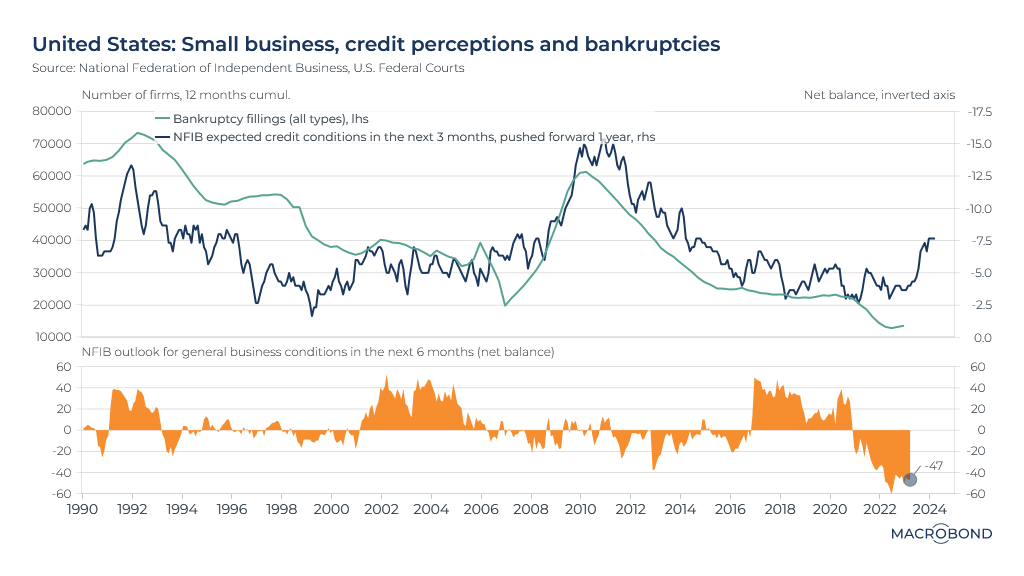
This chart tracks a survey of sentiment from the National Federation of Independent Business (NFIB). After an unprecedented tightening cycle and last month’s sudden bank failures, US small businesses are concerned about a credit crunch.
The top panel charts small businesses’ near-term expectations about credit conditions, as measured by the NFIB. We’ve inverted the Y axis, so a higher reading represents greater negativity.
Pushing this survey data forward by a year shows its power as a leading indicator when compared with three decades of US bankruptcy filings. With small businesses expecting tighter credit, this correlation suggests business failures may pick up from the multi-decade low that has lingered post-pandemic.
The second panel indicates further cause for concern: the NFIB survey shows that respondents remain heavily pessimistic about the six-month outlook for business conditions.
Visualising the recent history of oil prices
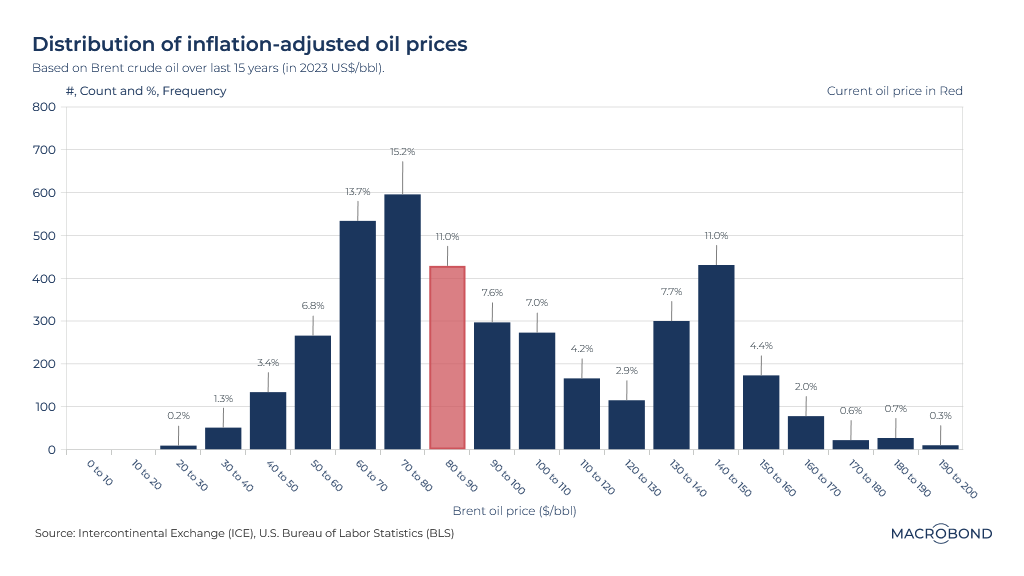
In the wake of the surprise production cut by OPEC+, and a price spike that now appears to have been short-lived, what constitutes a "normal" oil price?
Our chart analyses inflation-adjusted Brent crude prices per barrel over the past 15 years. It’s also a period that has seen active moves by Saudi Arabia and its OPEC partners to shift the price environment for various geopolitical, revenue and market-share goals. (Analysts have described 2014-16 and 2020 as periods where OPEC waged “price wars” against US shale producers and Russia, respectively. More recent Saudi production cuts have stirred tension with the Biden administration.)
This visualisation shows how prices have tended to cluster around two levels – roughly USD 70 and USD 140. For about 40 percent of the trading days in the past 15 years, oil was priced between USD 60 and USD 90; at the time of writing, the price was about USD 80.
A services boom in China
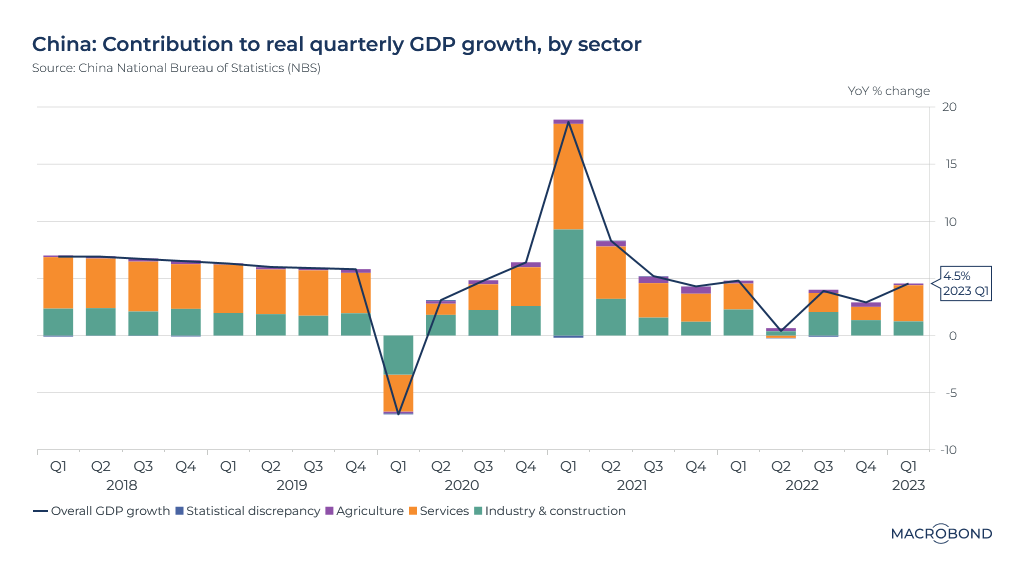
Several months after China’s great reopening, the world’s second-biggest economy is outperforming analysts’ expectations. Real GDP grew at a year-on-year pace of 4.5 percent in the first quarter, indicating that the nation’s 5 percent annual target is within reach.
We have previously analysed the effect of loosened Covid-19 restrictions in China using “soft” data like international flights and box-office revenue. This chart shows how reopening has translated into hard numbers.
Services, the orange part of the bars in the chart, accounted for almost 70 percent of quarterly growth, driven by consumer spending.
Copper stockpiles are depleting
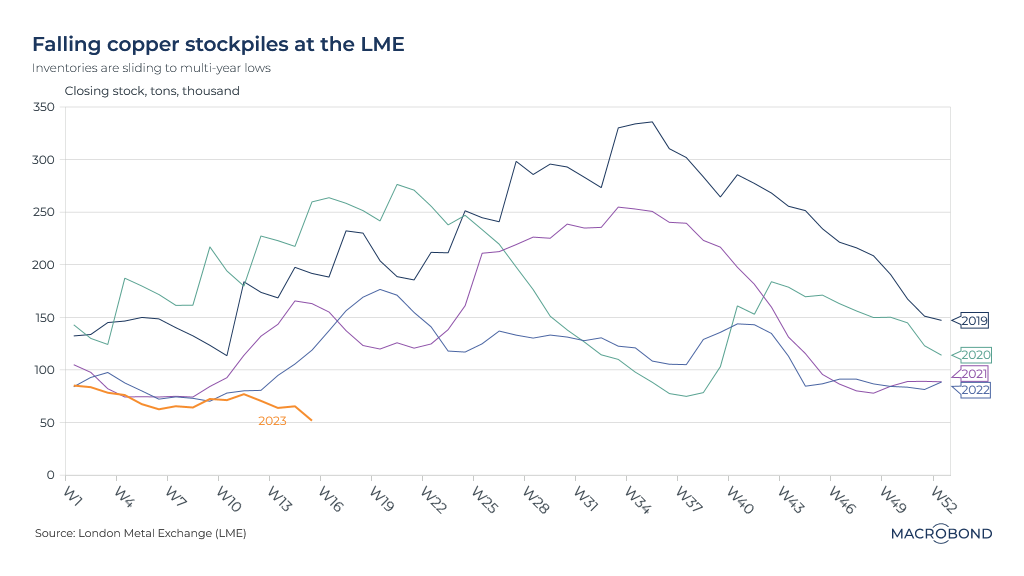
China’s great reopening is also making its presence felt in the metals market. Citing the rebound in Chinese demand, trading giant Trafigura recently forecast record-breaking copper prices this year.
This chart compares the London Metal Exchange’s data on copper inventories in 2023 to the month-on-month trends in the most recent calendar years – showing just how low stockpiles are, and hence why surprisingly strong Chinese demand is having such an effect. In fact, LME copper stockpiles are at their lowest since 2005.
Another factor that has constrained supplies of the metal is unrest in Peru, a major producer. Local miners had been left with surging inventory, unable to move it to seaports.
Housing drives euro zone disinflation amid stubbornly pricey food
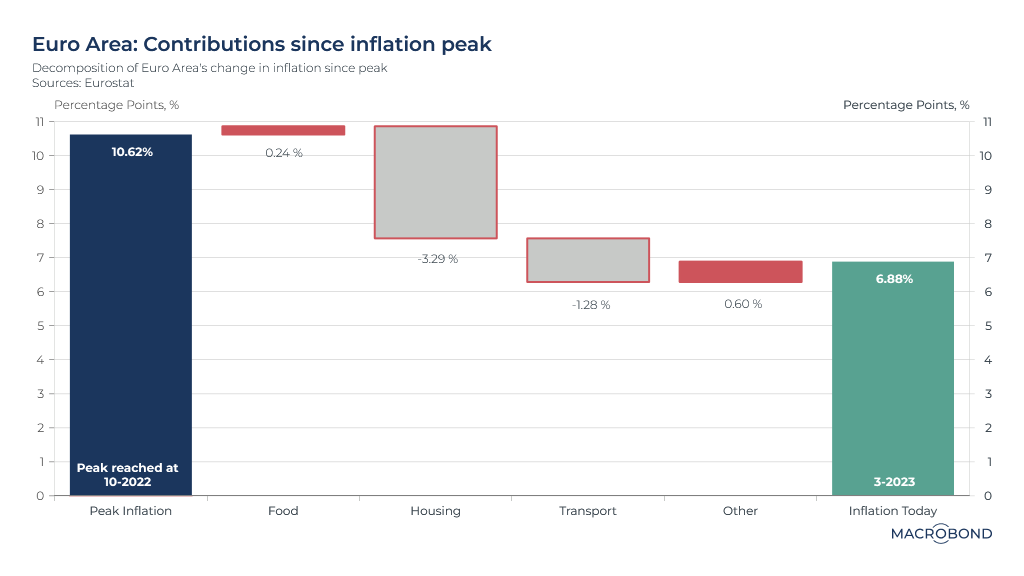
Stubbornly high inflation in the UK recently surprised markets, but peak inflation seems to be firmly in the rearview mirror for the eurozone – even if the ECB’s 2 percent target still seems far away.
In March, the bloc’s consumer price index rose 6. 9 percent year-on-year; that’s down from the record 10.6 percent pace in October.
This chart breaks down contributions to this trend. A slowdown in housing costs was the biggest factor, accounting for a 3.3 percentage point decline from the October peak. Transport costs are also on the way down. Food, meanwhile, is still getting more expensive.
US rent increases break from the trend
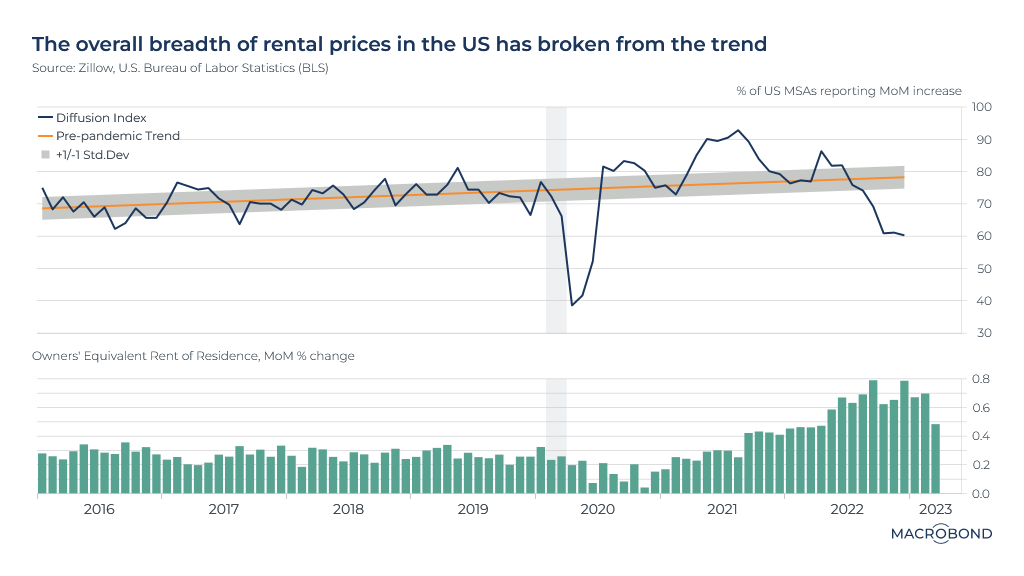
The US rental market is showing signs of weakness. We’re seeing a broad slowdown across the nation, rather than sharp adjustments in select markets.
This top panel in this chart tracks the share of the nation’s metro areas that are experiencing month-on-month rent hikes. A year ago, almost 90 percent of cities were reporting increasing rents.
That number has been gradually deflating and now stands at 60 percent – breaking from the pre-pandemic trend line.
The breadth of rent increases can also be considered a leading indicator for trends in nationwide owner's equivalent rent (OER), which we see in the second panel.
OER is used by the Bureau of Labor Statistics as a component of overall CPI. It measures rental markets by asking property owners to estimate the income they think they could get from a tenant.
Turkish gas production begins amid expensive foreign dependency
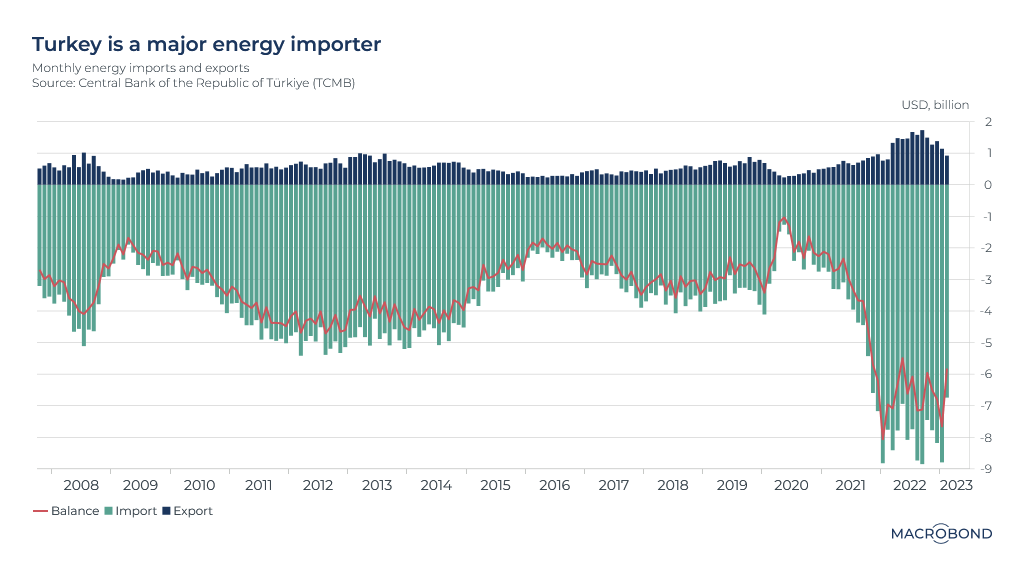
Turkish President Recep Tayyip Erdogan is facing a tight race for re-election on May 14. He could be hoping that a historic Black Sea gas discovery, which starts delivery this month, will give him more economic wiggle room.
As our chart shows, Turkey is heavily dependent on imported energy – especially natural gas from Russia. Prices for those gas shipments were surging even before the energy price shock that followed Russia’s invasion of Ukraine.
With inflation running above 50 percent, the Sakarya project might help Erdogan fulfil his promise to cut consumers’ gas bills. It could also provide some relief for a key economic vulnerability: Turkey’s current-account deficit, which recently hit a record.
5 topics
.png)
Macrobond delivers the world’s most extensive macroeconomic & financial data alongside the tools and technologies to quickly analyse, visualise and share insights – from a single integrated platform. Our application is a single source of truth for...
Expertise
.png)
Macrobond delivers the world’s most extensive macroeconomic & financial data alongside the tools and technologies to quickly analyse, visualise and share insights – from a single integrated platform. Our application is a single source of truth for...
.png)